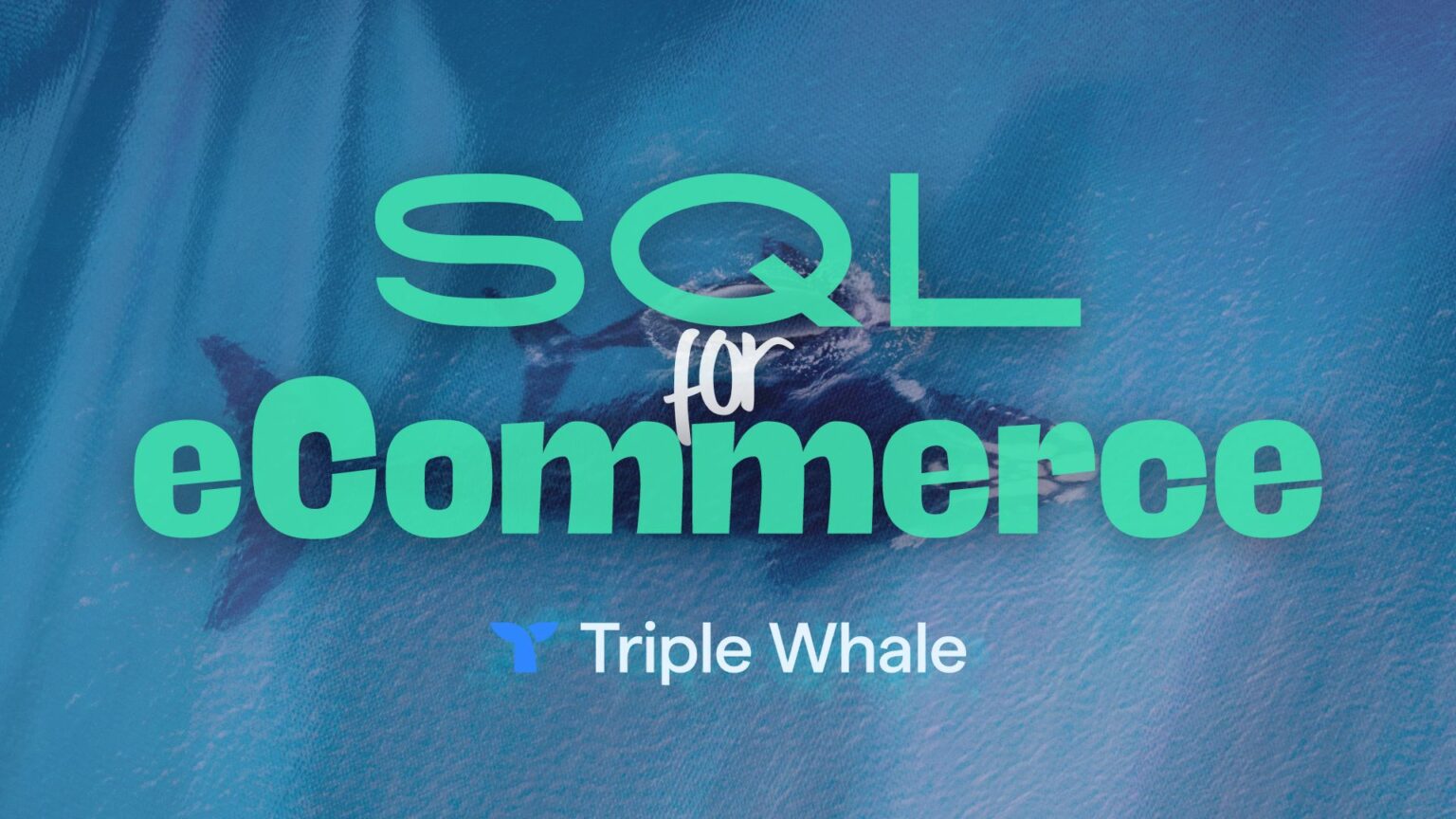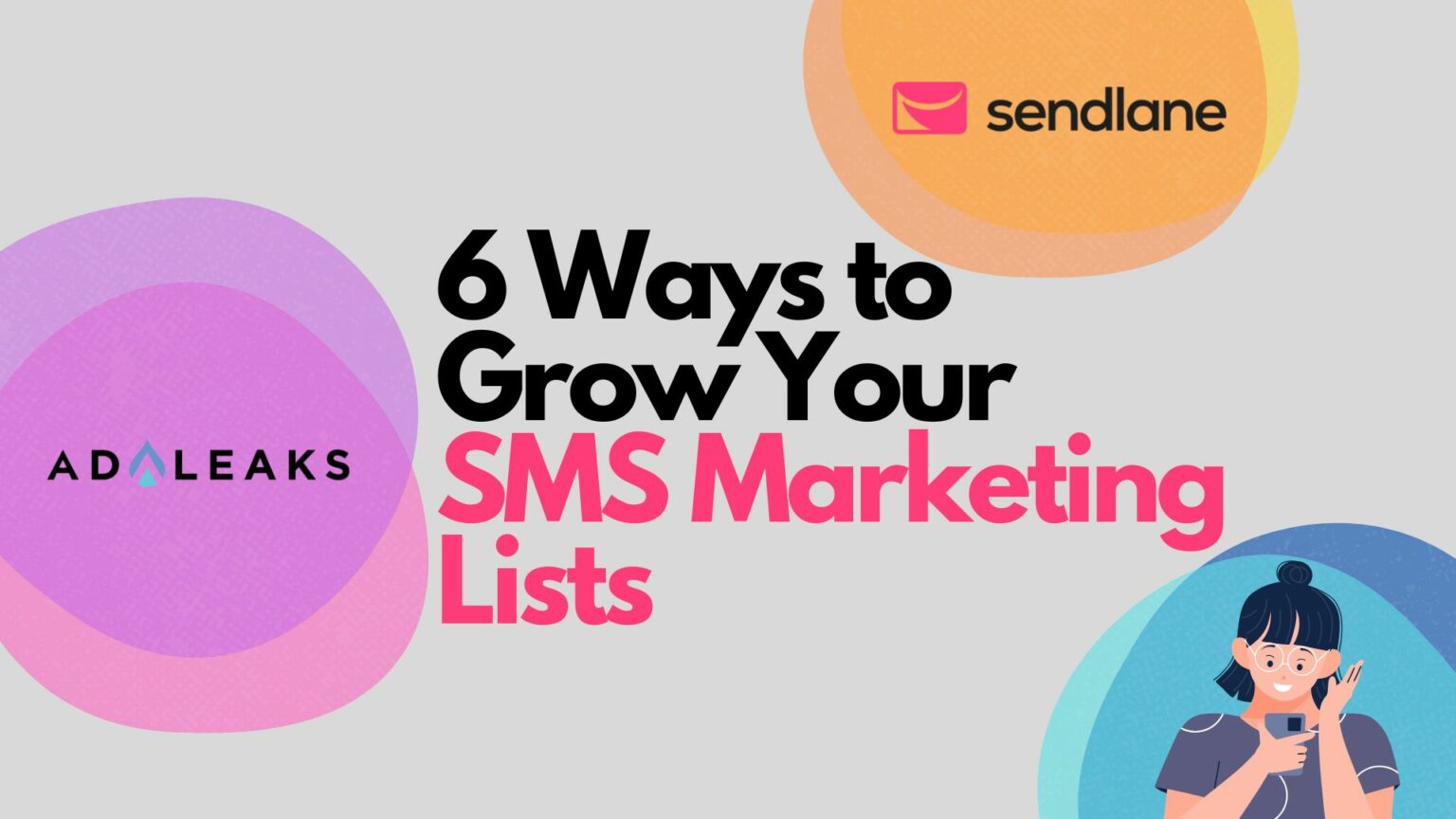
8 eCommerce Email Marketing Campaigns That Your Brand Needs
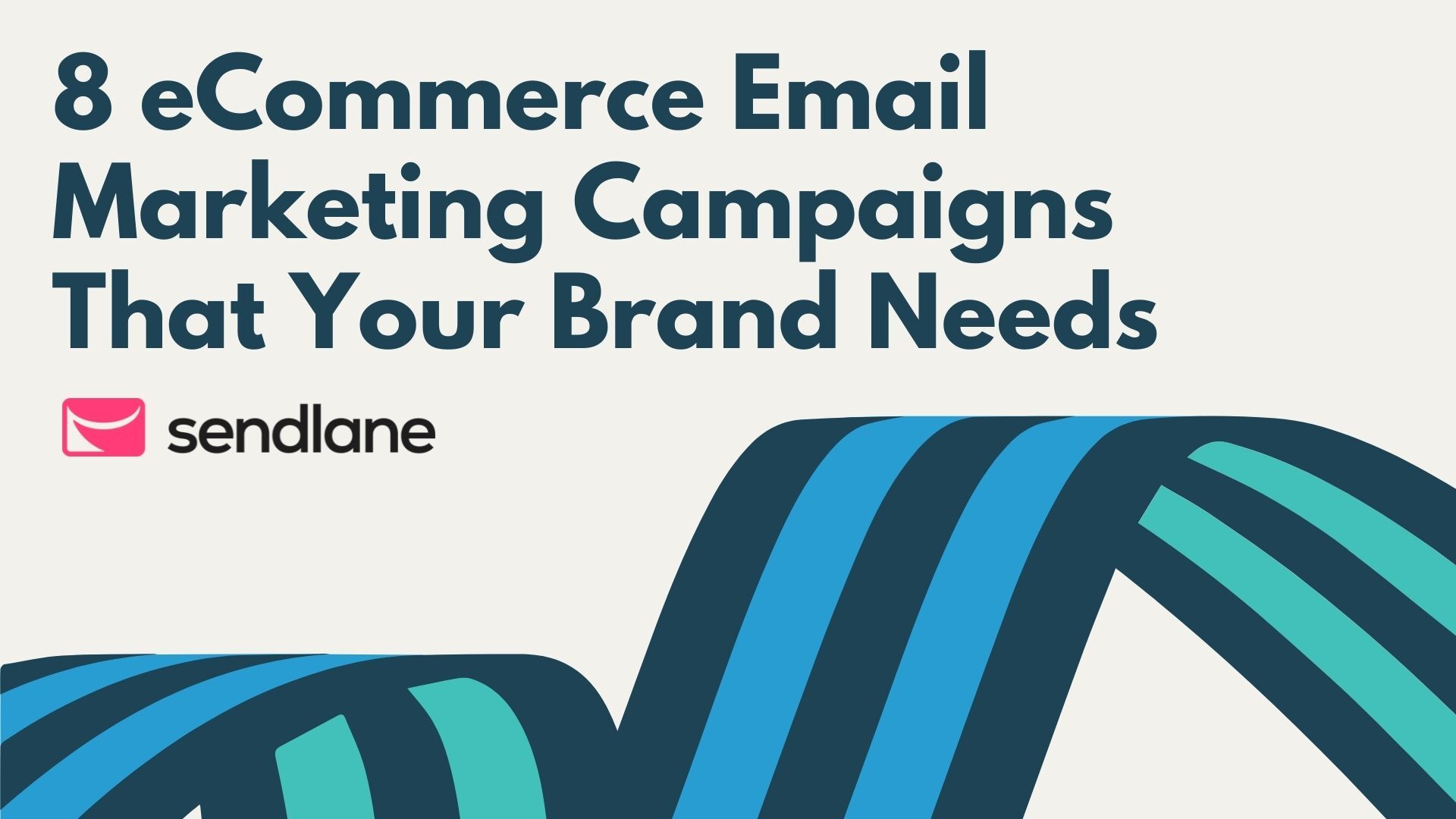

Digital marketers and advertisers are looking everywhere for answers to the problems created by iOS privacy changes and Google’s looming “cookie apocalypse.”
The disappearance of third-party data is making first-party data more important than ever. And if you’re already running email marketing campaigns, you have a head start in the form of your subscriber list.
Those names, email addresses, and interests are one of the main reasons that email marketing still has a higher ROI than most digital marketing strategies — especially because everyone on your list has (hopefully) opted in to receive your messages and promotions.
So if you want to set yourself up for success before third-party data goes away completely, it’s time to dive into eCommerce email marketing.
eCommerce Email Marketing Explained
eCommerce email marketing uses specific tactics like personalization, list segmentation, and automation to build relationships and generate sales through your messages.
You can also set up specific campaigns to nurture customers through your sales funnel from any point in the buyers’ journey.
Email marketing is essential for eCommerce stores in particular for a few reasons, including:
- Online shoppers expect emails. In fact, nearly 75% of consumers expect a welcome email after making a purchase or signing up for a subscription.
- Email marketing fosters relationships. Email marketing gives you the ability to maintain and curate a user experience over time that paid ads don’t provide. You can use relevant messages to increase sales opportunities and turn customers into repeat buyers.
- Email marketing uses first-party data. As we mentioned above, email marketing is effective because customers have opted-in to receive your messages. They’ve already proven that they like your brand by willingly giving you their information and asking you to keep in contact.
- Email marketing provides a higher ROI than other digital marketing strategies. If your eCommerce store isn’t investing in email marketing, you’re leaving a major portion of potential revenue on the table.
8 Email Marketing Campaigns Your eCommerce Store Needs
If you aren’t using email marketing for your eCommerce store already, we’ve put together eight campaigns you should start with. (And if you’re already running email marketing but don’t have all of these components, now is the time.)
- Welcome emails
- Product recommendation emails
- Referral emails
- Promotional emails
- Upsell/cross-sell emails
- Customer loyalty emails
- Survey emails
- A cart abandonment email flow
1. Welcome Emails for New Customers
Welcome emails are the first emails you send to new customers when they join your email list. It’s the best time to make a good first impression by introducing your brand and setting your new subscriber’s expectations for your relationship.
Welcome emails are also important for marketing because of their impressive open rates. According to Hive, some welcome email campaigns reach open rates as high as 91%.
If you’re creating a welcome email (or updating an old one), incorporate these best practices:
- Automate your welcome email to go out as soon as someone joins your list
- Use the subscriber’s name and relevant behavioral data to personalize the first email
- Present your brand in a fun and inviting way
- Encourage purchases with special welcome promotions for new subscribers
- Use clear, bold calls to action, so subscribers know how to engage with your content
This top-notch example from Persona does all of these things and more:

2. Boost Sales with Product Recommendations
The welcome email is your first contact, but you’ll need to keep sending emails regularly to engage your audience and convert customers.
Because your email marketing list is opt-in, you know that people want to hear from you. And if you’re an eCommerce store, your subscribers probably want product recommendations.
Leverage your first-party data to personalize product recommendations for your audience. When sportswear brand Kappa started emailing personalized product recommendations, their AOV increased by 11%.
To make your product recommendation emails more effective, try the following:
- Send an automated email after a customers view a particular page or product with more information
- Tailor messages using customer data like product interests, gender, size, etc.
- Send a reminder 24 hours after a customer purchases a similar product
Product recommendations can also announce new items, limited stock, or seasonal updates. This email from Everlane, for example, highlights new styles and ends with a call to action that takes users to view even more new products.

3. Expand Your Audience with Referral Emails
Every referral should include two emails from your store. The first is an email to your best and most loyal customers to ask them for referrals. The second is an email to a potential customer that lets them know a friend referred them.
Customers trust personal recommendations over branded marketing every time, which is why referral emails are a must for any eCommerce store. Referred customers also have a 37% higher retention rate.
Here are some ideas for your referral emails:
- Send automated referral emails to customers who purchased from you recently
- Offer incentives or a rewards program to customers who send referrals
- Give newly-referred customers a discount to encourage purchases
This referral email from Love Wellness uses store credit and a discount as incentives to refer friends to their brand.
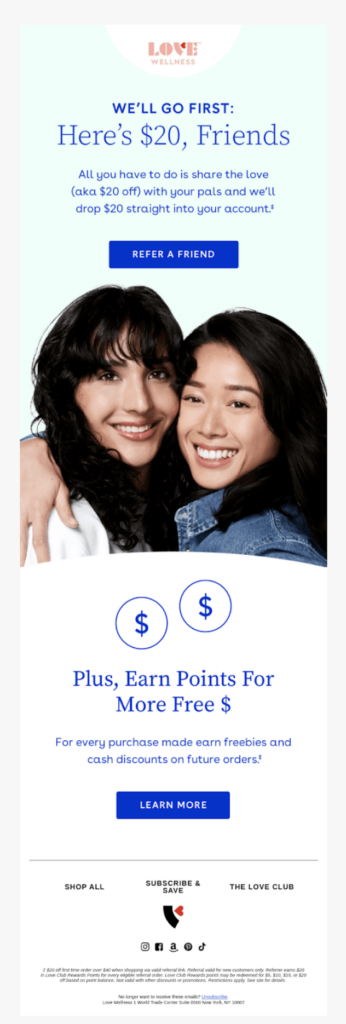
4. Highlight New Products with Promotional Emails
Like product recommendation emails, promotional emails inform your audience of a new deal.
If you’re worried that these messages are too “salesy” for your brand, remember that your customers opted into your email list. They want to hear about your brand. In fact, almost half of American consumers say that they want weekly brand emails, and promotional emails are the perfect way to show off your best products and share deals.
That said, effective promotional emails have certain components that you’ll want to include:
- Use past purchasing behavior to personalize the promotional email
- Plan your promotional emails around major online shopping holidays (Black Friday, Cyber Monday, Christmas, etc.)
- Find ways to add value beyond the promotion, such as subscribe-to-save, product bundle offers, rewards programs, etc.
In this example, Ritual provides insights into what contacts can expect from subscribing in addition to the discount offer.

5. Increase Revenue with Upselling and Cross-Selling Emails
Upselling encourages customers to buy higher-end versions of similar products, and cross-selling offers complementary items to customers who have already made a purchase.
Given that most eCommerce revenue comes from existing customers, upselling and cross-selling emails are essential. As much as 95% of your revenue can come from upsells and renewals.
In this eCommerce email marketing campaign, you’ll want to:
- Feature high-end items or VIP products
- Present relevant recommended products that complete the purchase
- Ask customers to join a subscription plan instead of making a one-time purchase
In this message, Dollar Shave Club effectively cross-sells products that compliment shoppers’ subscription boxes:
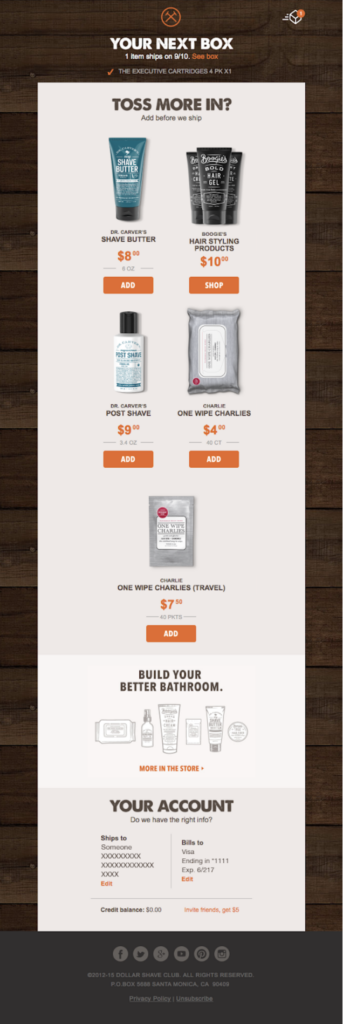
6. Reward Repeat Buyers with Customer Loyalty Emails
Customer retention is the most powerful way to grow revenue and sustain eCommerce success.
In one survey, 61% of businesses said that the majority of their revenue comes from repeat business and that repeat buyers spend 67% more than new customers.
If you’re starting a new customer loyalty program or publicizing an existing rewards program, use these email tips to get your audience involved:
- Inform customers when they are close to redeeming a reward
- Create a rewards program promotion to help customers level up
- Provide opportunities to earn extra rewards with social media posts, referrals, etc.
This short-and-sweet customer loyalty email from PetSmart does it right:
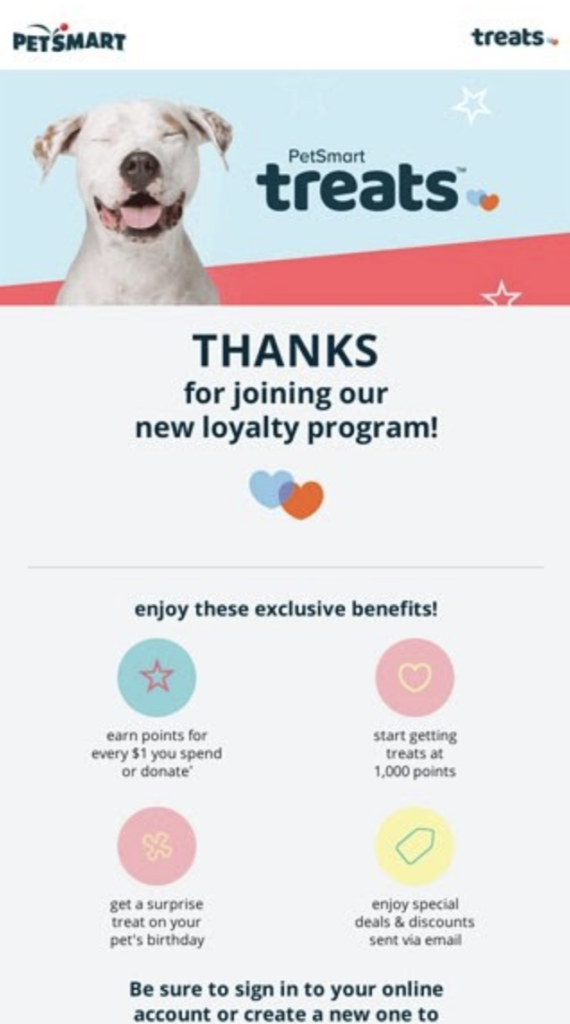
7. Learn About Your Customers with Survey Emails
Email marketing works best when you understand your customers and create messages that resonate with them. And if you want to learn what your customers want, sometimes the best way is to just ask.
Before you start sending survey emails, however, make sure that you have these elements in place:
- Regularly-scheduled Customer Satisfaction Survey (CSAT) emails
- Requests for a Net Promoter Score (NPS) rating after significant interactions
- Automated emails that ask for a product rating 24 hours after a purchase
Requests for product reviews also fall under the survey email umbrella. Bellroy asks for reviews with calls to action for each item in a recent purchase:

8. Save Lost Purchases with an Abandoned Cart Flow
The cart abandonment flow is easily one of the most critical email series for your eCommerce store.
eCommerce cart abandonment rates have a high of 70%, but customers typically respond positively when brands remind them to return to their carts and complete a purchase with an email.
To set up an outstanding cart abandonment experience, stick to these best practices:
- Capture an email address during check-out or with an exit-intent pop-up before they leave
- Send an automated cart abandonment email about 4 hours after on-site activity stopped
- Send two or three follow-up emails and add incentives to bring users back
This cart abandonment email from Grove uses free shipping as an incentive for customers to complete their purchases:

Your eCommerce Email Marketing Software Checklist
You’ll need an eCommerce email marketing software to automate the email marketing campaigns we’ve listed above. But you’ll need an ESP with specific functionality and integrations to make your emails truly effective.
Before you invest in an eCommerce email marketing tool, look for these must-have features:
- Built for eCommerce (like Sendlane)
- Seamless integration with your store’s platform (Shopify, WooCommerce, Miva, ClickBank, etc.)
- SMS marketing functionality
- Easy-to-use automation
- Multivariable list segmentation
- Access to real-time analytics
See How eCommerce Email Marketing Can Boost Your Brand
As third-party data continues to become less reliable, first-party strategies like email marketing will become even more valuable. And eCommerce email marketing campaigns are a necessity if you want to drive enthusiastic prospects to your website.
If you’re ready to start sending automated eCommerce marketing messages, try using Sendlane. Click the link for a free 14-day trial of Sendlane today!





